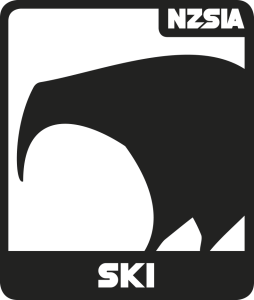Intro to Spins
 What, Why, How
What, Why, How
What
Introduction to the skills required to successfully land a 180 and lay foundations for all future spins.
Why
Through solid fundamentals and understanding we will be safely setting our students up for success, not just for the 180 but to develop to 360 and beyond.
How
First, ensure your students can confidently control their speed through turn shape while switch and check for understanding of basic jump skills. Introduce students to spins with skis off on flat ground. Have them try spins to the left and right. Try some leading with the upper body and some leading with the lower body. Establish pros and cons of each technique and remind them that versatility is the key to good park skiing. Try again with skis on, noticing the increased intensity needed to get the same result while wearing skis. Try this in movement by hopping 90º at the end of a J-turn. Try J-turns both left and right always spinning uphill to train both left and right spins. As confidence and skills grow, hop earlier in the turn until a full 180 is achieved across the fall line. It is now time to take it to a side hit, lip or roller and test the new skill with more air time. When this is successful it might be time to go back in the park and take the 180 to a jump.

 Technical Know-how
Technical Know-how
Skills
Students must develop strong awareness of how to generate spin through both the upper and lower body. This can and should be explored through drills and challenges across the mountain. Fine tune the rate, intensity and range of rotational movement and relate to the duration and timing of vertical movements.
Ski Snow Interaction
It is important to keep even lateral balance from foot to foot. This will allow for pop to be generated equally and the rotation to be around the axial plane. Skiers should aim to takeoff and land on a flat base whenever possible.
ATTL
The timing of the rotational and vertical movements must be in sync. If the rotation is started after the skier leaves the ground they will be unable to generate spin, as explained by Newton’s third law of motion. If the rotational movement is started too early the skier may exhaust their range of movement before getting airborne, leaving little intensity for the trick.
 Teaching Tactics
Teaching Tactics
Terrain
When introducing the movements, flat ground away from the flow of traffic is ideal. When trying spins in J-turns, terrain should only be as steep as the student is comfortable to ski switch on. As with almost all park skills, an outside/in approach should be taken to skill acquisition. Train what is needed outside the park to give you success in the park.
Class Handling
Be sure to give plenty of space between students when introducing spins. Poles should not be held when first trying spins, to avoid risk of impalement. When you start to move the group, as with all traverse/J-turn exercises, be sure to use quieter slopes and check for traffic before setting off. As confidence grows, side hits, banks and rollers can all be used to develop timing and confidence. These should be scoped first and spotters used if necessary.

